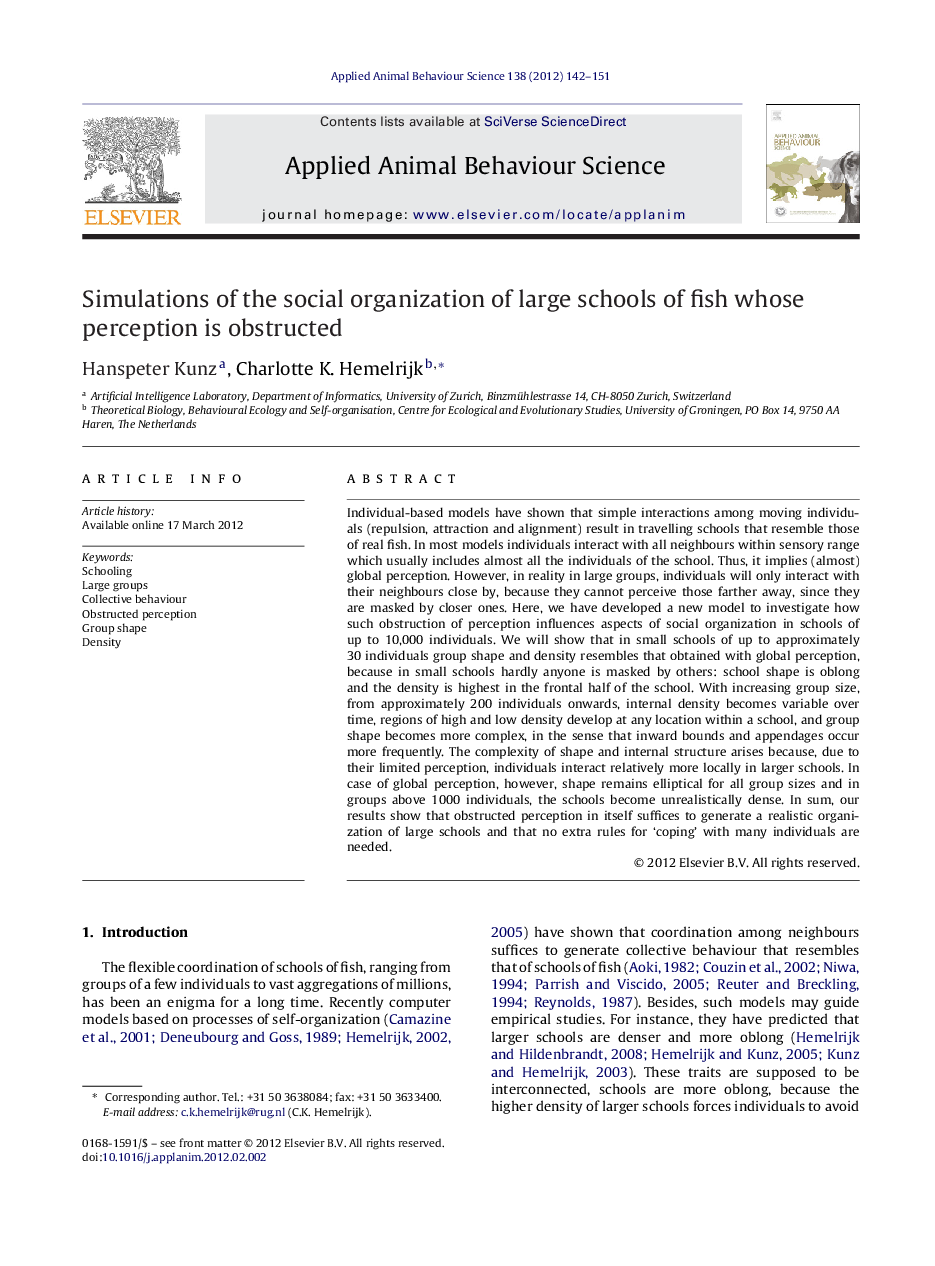| Article ID | Journal | Published Year | Pages | File Type |
|---|---|---|---|---|
| 4522925 | Applied Animal Behaviour Science | 2012 | 10 Pages |
Individual-based models have shown that simple interactions among moving individuals (repulsion, attraction and alignment) result in travelling schools that resemble those of real fish. In most models individuals interact with all neighbours within sensory range which usually includes almost all the individuals of the school. Thus, it implies (almost) global perception. However, in reality in large groups, individuals will only interact with their neighbours close by, because they cannot perceive those farther away, since they are masked by closer ones. Here, we have developed a new model to investigate how such obstruction of perception influences aspects of social organization in schools of up to 10,000 individuals. We will show that in small schools of up to approximately 30 individuals group shape and density resembles that obtained with global perception, because in small schools hardly anyone is masked by others: school shape is oblong and the density is highest in the frontal half of the school. With increasing group size, from approximately 200 individuals onwards, internal density becomes variable over time, regions of high and low density develop at any location within a school, and group shape becomes more complex, in the sense that inward bounds and appendages occur more frequently. The complexity of shape and internal structure arises because, due to their limited perception, individuals interact relatively more locally in larger schools. In case of global perception, however, shape remains elliptical for all group sizes and in groups above 1000 individuals, the schools become unrealistically dense. In sum, our results show that obstructed perception in itself suffices to generate a realistic organization of large schools and that no extra rules for ‘coping’ with many individuals are needed.
